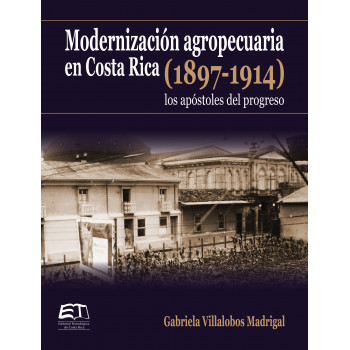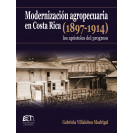MODERNIZACION AGROPECUARIA EN COSTA RICA (VERSION IMPRESA)
- Editorial: Editorial Tecnológica de Costa Rica
- Autor: Gabriela Villalobos Madrigal
- Disponibilidad: 2
"En el marco de la diversidad productiva y social que caracterizaba el panorama agrícola costarricense de finales del siglo XIX, la dominante actividad cafetalera sufrió su primer gran desencanto con la crisis de 1897, el precio a pagar por ser una economía monoexportadora dependiente del vaivén del mercado mundial. Esta crisis también puso en discusión las limitaciones de la caficultura, que desde la década de 1870 habían comenzado a evidenciarse. Después de esta dura coyuntura, la economía y el Estado costarricense sufrirán otro golpe durante la Primera Guerra Mundial entre 1914 y 1919. Este periodo entre crisis es el que enmarca el contexto temporal de esta investigación, donde se vive una primera etapa de la institucionalización de las políticas agrarias liberales alrededor de la fundación de la Sociedad Nacional de Agricultura (SNA) y del Departamento de Agricultura (DAG).
En el siglo XIX el desarrollo de la economía cafetalera se había visto favorecido por una serie de políticas estatales relacionadas con la privatización de la tierra y el impulso a la colonización, aunque con la crisis finisecular el reto del Estado consistió además en buscar un rol protagónico en la modernización y la diversificación agrícola. En ese contexto, el Estado liberal, las élites y los científicos del momento pusieron parte de sus experiencias, esperanzas y esfuerzos en torno al mundo agroganadero en la creación y desarrollo de la SNA. Su vida, que se extendió desde 1903 hasta 1912, marcó un antes y un después con respecto a la articulación de las políticas agrarias liberales de diversificación, experimentación, modernización y divulgación agropecuaria."
| Características del Libro | |
|---|---|
| Edición | Primera edición, 2017 |
| Páginas | 326 pp |
| Código ISBN | 978-9977-66-415-6 |
| Dimensiones | 16,51 x 21,59 cm |
| Peso | 605 grs |



